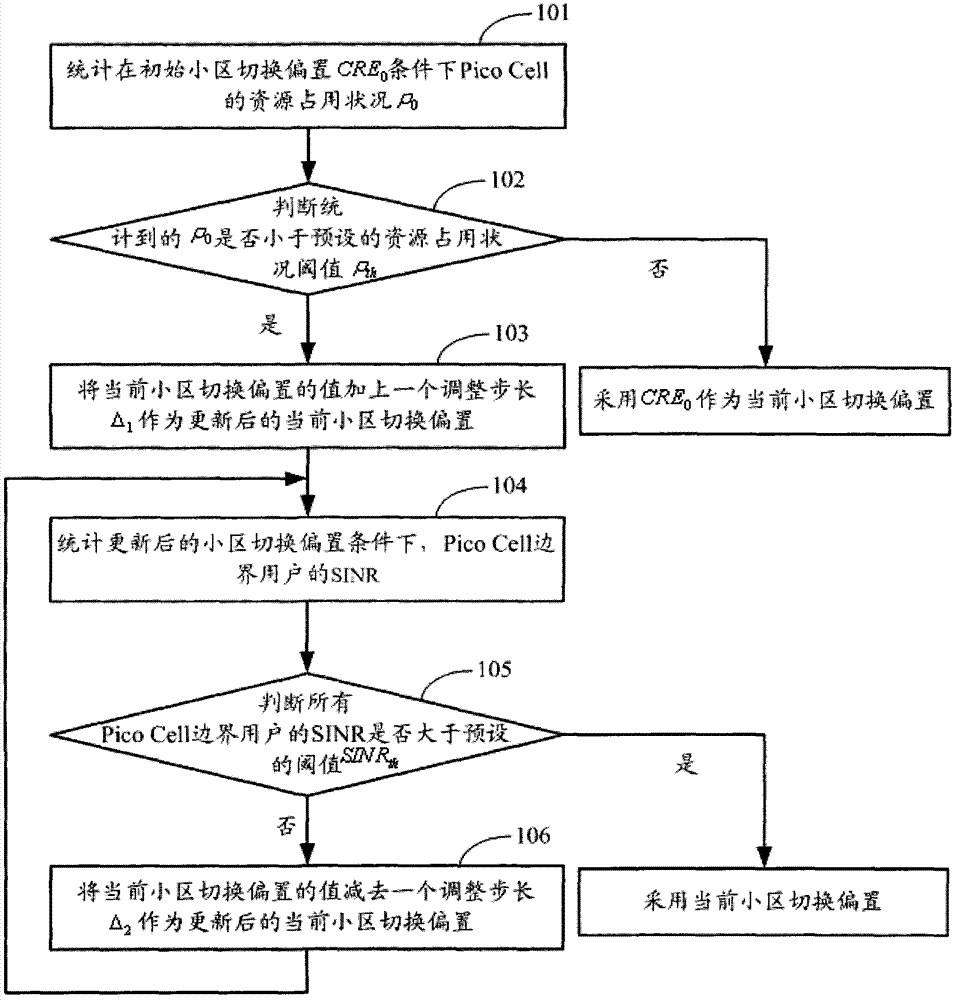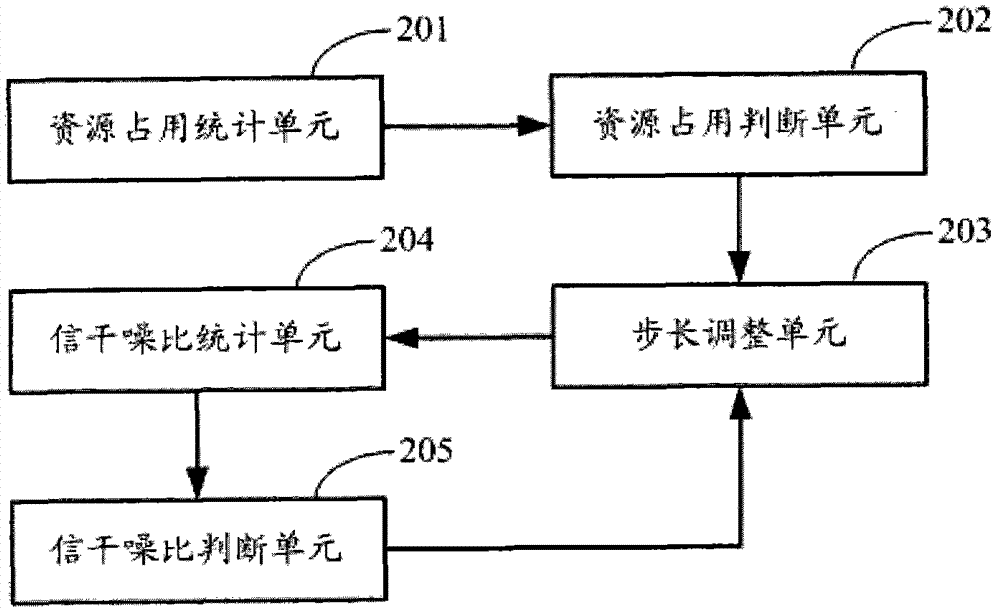Self-adaptive setting method and device for CRE bias
A cell handover and handover offset technology, applied in the field of wireless communication, can solve the problems of large co-frequency interference of border users and the inability to guarantee the channel quality of border users, and achieve the effect of excellent channel quality
- Summary
- Abstract
- Description
- Claims
- Application Information
AI Technical Summary
Problems solved by technology
Method used
Image
Examples
Embodiment 1
[0034] figure 1 It is a flow chart of an adaptive setting method for cell handover bias provided by Embodiment 1 of the present invention. In this embodiment, a user sets a cell handover bias from a macro cell to a Pico Cell cell, such as figure 1 As shown, the method includes the following steps:
[0035] Step 101: Count the CRE biased in the initial cell handover 0 The resource occupation status of Pico Cell under the condition ρ 0 .
[0036] The resource occupancy status involved in this step may include but not limited to: resource occupancy number or resource occupancy rate.
[0037] Step 102: Judging the statistically obtained ρ 0 Whether it is less than the preset resource occupancy status threshold ρ th , if yes, go to step 103; otherwise, use CRE 0 As the current cell switching offset, the setting process ends.
[0038] Among them, the resource occupancy status threshold ρ th Usually, it is a threshold set by the operator according to the network condition, an...
Embodiment 2
[0051] figure 2 A structural diagram of an apparatus for adaptively setting a cell handover bias provided in Embodiment 2 of the present invention, the apparatus is used to set a cell handover bias from a macro cell to a low power cell, such as figure 2 As mentioned above, the device includes: a resource occupation statistics unit 201 , a resource occupation judgment unit 202 , a step size adjustment unit 203 , a SINR statistics unit 204 and a SINR judgment unit 205 .
[0052] Resource occupancy statistics unit 201, used for statistics of CRE in the initial cell handover offset 0 Under the condition, the resource occupation status of the low-power cell ρ 0 .
[0053] Wherein, the related resource occupancy status may include but not limited to: resource occupancy number or resource occupancy rate.
[0054] A resource occupancy judging unit 202, configured to judge the statistically obtained ρ 0 Whether it is less than the preset resource occupancy status threshold ρ th ...
PUM
 Login to View More
Login to View More Abstract
Description
Claims
Application Information
 Login to View More
Login to View More - Generate Ideas
- Intellectual Property
- Life Sciences
- Materials
- Tech Scout
- Unparalleled Data Quality
- Higher Quality Content
- 60% Fewer Hallucinations
Browse by: Latest US Patents, China's latest patents, Technical Efficacy Thesaurus, Application Domain, Technology Topic, Popular Technical Reports.
© 2025 PatSnap. All rights reserved.Legal|Privacy policy|Modern Slavery Act Transparency Statement|Sitemap|About US| Contact US: help@patsnap.com


